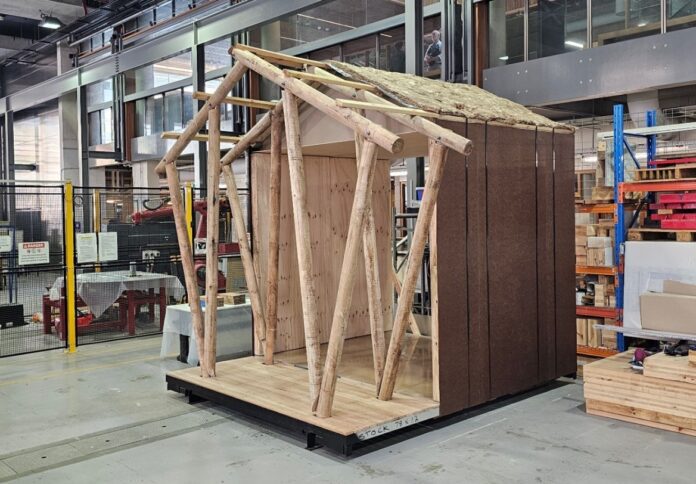
Researchers at the University of Queensland (UQ) have developed innovative timber-cardboard construction panels that could provide a lightweight, cost-effective, and sustainable solution for temporary housing in disaster-stricken areas.
The new design, which is 50 per cent lighter than previous iterations while maintaining strength, has been detailed in a study by structural engineering PhD candidate Mahmoud Abu-Saleem and Associate Professor Joe Gattas from UQ’s School of Civil Engineering.
Dr Gattas highlighted the potential benefits of integrating cardboard into construction materials, emphasising its cost-effectiveness and environmental advantages.
“Cardboard is one of the most highly recycled materials for packaging in Australia,” he said. “Using it in construction extends its service life before recycling, without increasing waste or resource consumption.”
The newly developed timber-cardboard web-core sandwich (TCWS) panels consist of thin timber facings supported by cardboard studs and air pockets, an evolution from previous timber-cardboard sandwich (TCS) panels, which used a solid cardboard core.
Laboratory testing demonstrated that the TCWS panels are not only 50 per cent lighter but also as strong or stronger than their predecessors. Furthermore, they exhibited a 33 per cent higher strength compared to similar foam or bio-based panels.
Dr Gattas explained that the reduction in weight significantly enhances the panels’ practicality.
“The panels are intended for short-term use, possibly for temporary housing or granny flats for people displaced by natural disasters,” he said.
“The fact they are lighter means they will be easier to lift and fit together quickly in a post-disaster scenario, where temporary structures are in high demand.
The panels have been tested in a prototype ‘cardboard house’ at UQ’s Pinjarra Hills Research Facility, successfully enduring the challenges of Queensland’s humid climate.
To improve resilience, the researchers incorporated architectural features common in traditional Queenslander-style homes, such as large eaves, to provide additional protection against the elements.
Despite the advantages, researchers acknowledge potential trade-offs.
Abu-Saleem noted that while the air gaps reduced weight, they might also lower insulation efficiency.
“This could be addressed in future by adding another waste material like paper into the air gaps to improve their insulation properties,” he said.
The research paper is published in Structures.




















